Ever caught yourself staring at your dusty PS2, wondering if those blocky graphics still have any bite?
You’re not alone. That itch to rewind time is real. And you know what? It’s about damn time you scratched it.
Maybe you’re thinking, “Who am I kidding? I’ve grown up.” But wait, remember the rush of your first Final Fantasy victory?
The thrill of pulling off a perfect Tony Hawk combo? Those memories don’t lie. They’re part of you, and craving that feeling again isn’t childish; it’s human.

You’re not just chasing ghosts of pixels past; you’re chasing a feeling of pure, unfiltered joy. You’re chasing the sound of that CRT hum, the simple certainty that for a moment life was all about button mashing and boss battles.
Over the next few minutes, you’ll rediscover ten games that still hit harder than any 2025 blockbuster. You’ll see why PS1 and PS2 classics deserve a spot on your shelf right now.
I promise you’ll feel the magic all over again. So, grab your controller; let’s begin.
It was a leap from cartridges to CD‑based games, unlocking full‑blown cutscenes and orchestral soundtracks. Then came the PS2, packing more memory and a faster processor into that gray shell.
Loading screens got shorter, textures got sharper, and world sizes ballooned. Remember booting up Metal Gear Solid on PS1, waiting through that slow startup? Now compare it to Shadow of the Colossus on PS2—instant immersion. It’s like trading a tricycle for a motorcycle, but you still feel the wind in your hair.
Those DualShock controllers weren’t just plastic shapes; they were the first time you felt a game’s heartbeat. The PS1’s rumble was primitive, but every buzz told you a bomb dropped nearby.

The PS2’s DualShock 2 added true analog triggers, so pulling back a bowstring in God of War II felt surprisingly real. Today’s haptic feedback owes its roots here. Plugging in one of those old controllers still brings a familiar click, a tiny ritual that no Bluetooth pad can match.
Yes, modern games have photorealistic visuals and sprawling open worlds.
But back then you explored pixelated corridors you couldn’t Google. Boss patterns weren’t on YouTube; they were puzzles you had to crack yourself. That sense of genuine discovery sparks a thrill no tutorial can replicate.
You remember pausing mid‑boss fight to jot down notes on a sticky pad; no shame in admitting it. That anticipation soaks into your bones. In 2025, diving back into these titles feels like reclaiming a piece of yourself.
But back then, creative art direction filled gaps. Think of Final Fantasy VII’s painted backgrounds. They were hand‑crafted scenes, each frame a tiny masterpiece. Today’s games boast ray tracing and 4K, but sometimes you miss the charm of those painted skies.
Under that gray PS2 shell lurked real muscle. PS1 could handle simple 3D worlds. PS2 powered sprawling landscapes and more enemies on screen. Remember Gran Turismo on PS1 felt tight, but Gran Turismo 3 on PS2 felt like you were really behind the wheel of hundreds of cars. That leap in scale still impresses in 2025.

You see echoes of these classics in today’s hits. The survival tension in Silent Hill lives on in modern horror. The precise platforming of Crash Bandicoot shines through indie throwbacks. And you can trace every open‑world quest back to how PS2 taught us to roam. It’s a family tree of ideas, each new branch rooted in old growth.
On PS1, you ran through narrow, pre‑rendered streets. On PS2 (in games like X) the world opened in full 3D. But FF VII’s fixed backgrounds forced your mind to fill in gaps. That blend of tech and imagination still feels fresh.
Today’s RPGs brag about endless side quests and dynamic weather. But few match the tight storytelling of Cloud’s journey. Those three‑hour chapters felt like binge‑watching a mini‑series. No filler, all heat.
You might think rigid camera angles are clunky. Yet they frame each moment like a director’s cut. That control still beats running amok in an open world.
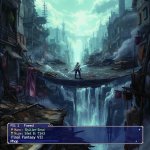
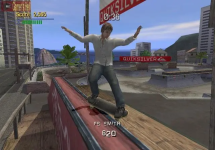
On PS1, levels felt tight and packed. PS2’s THPS 3 widened arenas, added manuals, and let combos fly longer. Still, PS1’s OG design forced you to master every half‑pipe inch. Today’s sports games digitize real pros and arenas. But they rarely capture that DIY thrill of chaining tricks in a graffiti‑laced warehouse. THPS 2 was pure energy in controller form.
You’d think later sequels improved everything. Yet the simplicity of two buttons and a tape recorder to save scores still beats bloated modern menus.
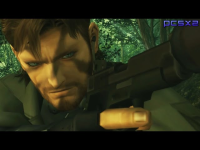
PS1’s Metal Gear Solid dazzled with codec calls and flat stages. PS2’s Snake Eater dropped you into a living world: day/night cycles, edible plants, and real stealth. It was James Bond by way of survival sim.
Today’s stealth titles lean on markers and HUDs. Snake Eater dared you to rely on sound, sight, and instinct. No glowy outlines on enemies; just you and the hunt. You’d expect newer games to make stealth easier. But this old-school system taught patience better than any tutorial. You actually learned to wait.
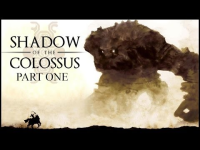
PS1 games dazzled with tight levels and bold colors. But PS2 let those Colossi stretch sky-high, their shadows blotting out the sun. The leap in hardware meant you weren’t just hunting bosses; you were chasing legends.
Fast‑paced shooters today bombard you with on‑screen prompts. Shadow trusted you to read the wind in the grass, the echo of distant roars. It was less “game” and more poetry in motion. You would assume silence makes for boring gameplay. Yet here, the hush between strikes became the most thrilling beat of all.
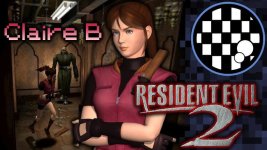
Back then, PS1’s limited polygons couldn’t match modern gore. Yet those fixed camera angles turned every corner into a set piece of dread. It was less about springing scares and more about creeping dread.
Fast‑forward to today’s horror games packed with flashing environments and high‑def blood, and you’ll find they rarely hold that slow‑burn tension. Modern titles shove jump scares at you. RE2’s build‑up was like a suspense playlist on loop.
Strange as it sounds, running out of ammo felt liberating. Scavenging each hallway, hearing the typewriter’s ink ribbon click, it gave weight to every bullet. It was terror you earned.
PS1 beat ’em ups laid the groundwork with simple combos. PS2 gave us fluid juggle mechanics, pull‑and‑throw finishes, and cinematic boss fights. Suddenly, every swing mattered.
Compare that to today’s action titles overloaded with skill trees and crafting menus. God of War II delivered a pure rush. You weren’t tinkering with stats. You were unleashing raw power. Oddly, the lack of multiplayer made it more intense. No distractions or scoreboard chases. Just you, the screen, and a god‑sized challenge that demanded total focus.
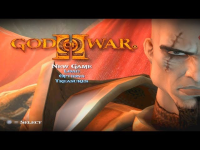
On PS1, Castlevania stuck to 2D stages, but this PS2 entry let you roam grand halls in full 3D. Every stained-glass window and flickering torch added to the atmosphere, like wandering through a haunted museum. Today’s action games often flash you skills and cooldown bars.
Here, mastering your whip’s timing was your only power-up. Learning enemy tells became second nature, and every successful dodge felt earned. Weirdly, the lack of checkpoints wasn’t annoying—it made each triumph sweeter. Surviving a long stretch with no save spot turned failure into fuel for your next attempt.
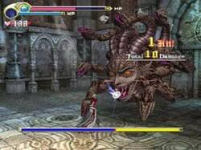
Ico didn’t shout at you. It whispered.
Compared to the loud, fast-paced games of today, this one was quiet. Minimalist. Every echo in that stone castle hit harder than any explosion in a modern shooter. You didn’t just play it—you felt it.
What made it stick wasn’t the puzzles or platforming. It was the feeling of protecting someone in a world that had already given up on both of you. The grip of Yorda’s hand when danger came? That wasn’t gameplay. That was trust.
And even though the controls were a bit clunky and the pace was slow, none of that mattered. It wasn’t about beating levels. It was about the bond.
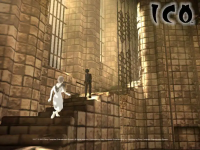
The graphics? Chunky by today’s standards.
But back then, those 3D models felt alive. Movements were smooth, sidestepping was revolutionary, and the characters? Iconic. No one forgets the first time they got wrecked by a random Eddie Gordo combo.
What made Tekken 3 legendary wasn’t just the fighting mechanics. It was the energy around it. Friends yelling, bragging, demanding rematches. Losing felt personal. Winning? Even more so.
These days, fighting games are sleek and complicated. Online play is the standard, but something’s missing. Tekken 3 thrived on the couch. On shared laughs. On smack talk between friends.
It didn’t need patch updates or seasonal drops. It just needed two players, one screen, and enough pride not to quit after a loss.
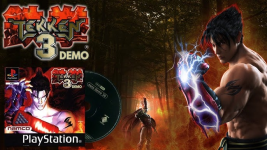
PS1 horror teased you with shadows. PS2 horror plunged you into thick mist and haunting silence. The town’s empty streets echo with distant footsteps you can’t place. Modern horror games rely on jump scares and gore to get your heart racing. Silent Hill 2 taught you fear by taking away your bearings. No map, no marker, just your own wits and nerves.
Strangest part?
The monsters felt less like enemies and more like guilt made flesh. That psychological edge still lingers. You’re not just dodging attacks, you’re confronting what lurks in your own mind.
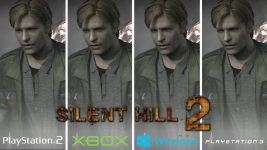
You might be thinking, “Is this really worth firing up that old console again?” Totally get it. Digging out tangled cables and worn controllers feels like a chore. But hey, remember the thrill of your first boss fight, the pump of victory in your veins, the soundtrack stuck in your head for days? That rush never really goes away.
Feel it yet? Good.
Because revisiting these ten classics isn’t just about pixels. It’s about reclaiming a side of you that laughed louder, stayed up later, and believed anything was possible. You’ll rediscover joy in simple challenges, pride in earned victories, and camaraderie when you swap stories with friends.
Think of every memory unlocked as a power‑up. Each title is a shortcut back to the best parts of your past. And the best part? The fun hits just as hard now as it did then. No loading screens around life’s real moments. Just you, a controller, and pure unfiltered bliss.
So go on. Pop in that disc. Plug in those cords.
Let the hum of the console be your battle cry. You owe it to yourself. Your inner gamer is waiting, ready to stand up, fist in the air, and shout bravo. Let’s make some new old‑school memories.
What are your best PS1/PS2 memories? Comment below.
You’re not alone. That itch to rewind time is real. And you know what? It’s about damn time you scratched it.
Maybe you’re thinking, “Who am I kidding? I’ve grown up.” But wait, remember the rush of your first Final Fantasy victory?
The thrill of pulling off a perfect Tony Hawk combo? Those memories don’t lie. They’re part of you, and craving that feeling again isn’t childish; it’s human.

You’re not just chasing ghosts of pixels past; you’re chasing a feeling of pure, unfiltered joy. You’re chasing the sound of that CRT hum, the simple certainty that for a moment life was all about button mashing and boss battles.
Over the next few minutes, you’ll rediscover ten games that still hit harder than any 2025 blockbuster. You’ll see why PS1 and PS2 classics deserve a spot on your shelf right now.
I promise you’ll feel the magic all over again. So, grab your controller; let’s begin.
Why PS1 and PS2 Still Make Sense in 2025
Think the PS1 was just a clunky box with blocky graphics? Think again.It was a leap from cartridges to CD‑based games, unlocking full‑blown cutscenes and orchestral soundtracks. Then came the PS2, packing more memory and a faster processor into that gray shell.
Loading screens got shorter, textures got sharper, and world sizes ballooned. Remember booting up Metal Gear Solid on PS1, waiting through that slow startup? Now compare it to Shadow of the Colossus on PS2—instant immersion. It’s like trading a tricycle for a motorcycle, but you still feel the wind in your hair.
Those DualShock controllers weren’t just plastic shapes; they were the first time you felt a game’s heartbeat. The PS1’s rumble was primitive, but every buzz told you a bomb dropped nearby.

The PS2’s DualShock 2 added true analog triggers, so pulling back a bowstring in God of War II felt surprisingly real. Today’s haptic feedback owes its roots here. Plugging in one of those old controllers still brings a familiar click, a tiny ritual that no Bluetooth pad can match.
Yes, modern games have photorealistic visuals and sprawling open worlds.
But back then you explored pixelated corridors you couldn’t Google. Boss patterns weren’t on YouTube; they were puzzles you had to crack yourself. That sense of genuine discovery sparks a thrill no tutorial can replicate.
You remember pausing mid‑boss fight to jot down notes on a sticky pad; no shame in admitting it. That anticipation soaks into your bones. In 2025, diving back into these titles feels like reclaiming a piece of yourself.
1. PS1 vs. PS2
Before we go into the game, I would like to compare these two pieces of pure gold. Graphics have come miles. What once looked like chunky Lego blocks now looks like real life.But back then, creative art direction filled gaps. Think of Final Fantasy VII’s painted backgrounds. They were hand‑crafted scenes, each frame a tiny masterpiece. Today’s games boast ray tracing and 4K, but sometimes you miss the charm of those painted skies.
Under that gray PS2 shell lurked real muscle. PS1 could handle simple 3D worlds. PS2 powered sprawling landscapes and more enemies on screen. Remember Gran Turismo on PS1 felt tight, but Gran Turismo 3 on PS2 felt like you were really behind the wheel of hundreds of cars. That leap in scale still impresses in 2025.

You see echoes of these classics in today’s hits. The survival tension in Silent Hill lives on in modern horror. The precise platforming of Crash Bandicoot shines through indie throwbacks. And you can trace every open‑world quest back to how PS2 taught us to roam. It’s a family tree of ideas, each new branch rooted in old growth.
2. Final Fantasy VII (PS1)
You remember the PS1 whirr. Then that opening chord of “Prelude.” Instant chills. Seeing Midgar’s plate hover above slums felt huge. Like stepping into a living painting.On PS1, you ran through narrow, pre‑rendered streets. On PS2 (in games like X) the world opened in full 3D. But FF VII’s fixed backgrounds forced your mind to fill in gaps. That blend of tech and imagination still feels fresh.
Today’s RPGs brag about endless side quests and dynamic weather. But few match the tight storytelling of Cloud’s journey. Those three‑hour chapters felt like binge‑watching a mini‑series. No filler, all heat.
You might think rigid camera angles are clunky. Yet they frame each moment like a director’s cut. That control still beats running amok in an open world.

3. Tony Hawk’s Pro Skater 2 (PS1)
Remember dropping into “Hangar” and hearing that punk riff kick in? Your heart pounded as you nailed a 900 with milliseconds to spare.
On PS1, levels felt tight and packed. PS2’s THPS 3 widened arenas, added manuals, and let combos fly longer. Still, PS1’s OG design forced you to master every half‑pipe inch. Today’s sports games digitize real pros and arenas. But they rarely capture that DIY thrill of chaining tricks in a graffiti‑laced warehouse. THPS 2 was pure energy in controller form.
You’d think later sequels improved everything. Yet the simplicity of two buttons and a tape recorder to save scores still beats bloated modern menus.
4. Metal Gear Solid 3: Snake Eater (PS2)
Ever fumbled through the bushes with Snake, heart racing as you balanced on fallen logs? That jungle camo felt like a second skin.
PS1’s Metal Gear Solid dazzled with codec calls and flat stages. PS2’s Snake Eater dropped you into a living world: day/night cycles, edible plants, and real stealth. It was James Bond by way of survival sim.
Today’s stealth titles lean on markers and HUDs. Snake Eater dared you to rely on sound, sight, and instinct. No glowy outlines on enemies; just you and the hunt. You’d expect newer games to make stealth easier. But this old-school system taught patience better than any tutorial. You actually learned to wait.
5. Shadow of the Colossus (PS2)
Picture this: you’re astride Agro at dawn, mist curling around the ruins. No maps. No quest markers. Just you, your horse, and towering giants looming like living mountains.
PS1 games dazzled with tight levels and bold colors. But PS2 let those Colossi stretch sky-high, their shadows blotting out the sun. The leap in hardware meant you weren’t just hunting bosses; you were chasing legends.
Fast‑paced shooters today bombard you with on‑screen prompts. Shadow trusted you to read the wind in the grass, the echo of distant roars. It was less “game” and more poetry in motion. You would assume silence makes for boring gameplay. Yet here, the hush between strikes became the most thrilling beat of all.
6. Resident Evil 2 (PS1)
You step into dimly lit hallways as Leon or Claire, the stench of decay hanging in the air. Every creak of the floorboard makes your pulse jump.
Back then, PS1’s limited polygons couldn’t match modern gore. Yet those fixed camera angles turned every corner into a set piece of dread. It was less about springing scares and more about creeping dread.
Fast‑forward to today’s horror games packed with flashing environments and high‑def blood, and you’ll find they rarely hold that slow‑burn tension. Modern titles shove jump scares at you. RE2’s build‑up was like a suspense playlist on loop.
Strange as it sounds, running out of ammo felt liberating. Scavenging each hallway, hearing the typewriter’s ink ribbon click, it gave weight to every bullet. It was terror you earned.
7. God of War II (PS2): A Game I Never Owned My Copy but Played the Most
Dragging Kratos through the depths of Hades for the first time felt like holding thunder in your hands. His blades carved through myth, and you powered through every titan’s roar.PS1 beat ’em ups laid the groundwork with simple combos. PS2 gave us fluid juggle mechanics, pull‑and‑throw finishes, and cinematic boss fights. Suddenly, every swing mattered.
Compare that to today’s action titles overloaded with skill trees and crafting menus. God of War II delivered a pure rush. You weren’t tinkering with stats. You were unleashing raw power. Oddly, the lack of multiplayer made it more intense. No distractions or scoreboard chases. Just you, the screen, and a god‑sized challenge that demanded total focus.

8. Lament of Innocence (PS2)
Stepping into that Gothic cathedral felt like entering a living nightmare. The air thrummed with organ chords as you swung your whip at gargoyles and shadowy knights.On PS1, Castlevania stuck to 2D stages, but this PS2 entry let you roam grand halls in full 3D. Every stained-glass window and flickering torch added to the atmosphere, like wandering through a haunted museum. Today’s action games often flash you skills and cooldown bars.
Here, mastering your whip’s timing was your only power-up. Learning enemy tells became second nature, and every successful dodge felt earned. Weirdly, the lack of checkpoints wasn’t annoying—it made each triumph sweeter. Surviving a long stretch with no save spot turned failure into fuel for your next attempt.

9. ICO (PS2): Another Gem that I Never Owned
You start off in a shadowy castle, barely knowing what’s going on. You’re a boy with horns, trying to help a pale, fragile girl escape. There’s no HUD, no mission brief, and no noisy tutorial. Just two silhouettes holding hands in a world that feels both empty and sacred.Ico didn’t shout at you. It whispered.
Compared to the loud, fast-paced games of today, this one was quiet. Minimalist. Every echo in that stone castle hit harder than any explosion in a modern shooter. You didn’t just play it—you felt it.
What made it stick wasn’t the puzzles or platforming. It was the feeling of protecting someone in a world that had already given up on both of you. The grip of Yorda’s hand when danger came? That wasn’t gameplay. That was trust.
And even though the controls were a bit clunky and the pace was slow, none of that mattered. It wasn’t about beating levels. It was about the bond.

10. Tekken 3 (PS1)
If you were around when Tekken 3 hit the PS1, you probably remember the sound of your controller buttons clicking like mad in a packed living room. Everybody had their favorite fighter, and somehow, Hwoarang’s kicks always felt a little unfair.The graphics? Chunky by today’s standards.
But back then, those 3D models felt alive. Movements were smooth, sidestepping was revolutionary, and the characters? Iconic. No one forgets the first time they got wrecked by a random Eddie Gordo combo.
What made Tekken 3 legendary wasn’t just the fighting mechanics. It was the energy around it. Friends yelling, bragging, demanding rematches. Losing felt personal. Winning? Even more so.
These days, fighting games are sleek and complicated. Online play is the standard, but something’s missing. Tekken 3 thrived on the couch. On shared laughs. On smack talk between friends.
It didn’t need patch updates or seasonal drops. It just needed two players, one screen, and enough pride not to quit after a loss.

11. Silent Hill 2 (PS2)
Walking into that fog‑choked town, every streetlamp feels like a spotlight on your fear. James Sunderland’s quest for a lost note turns into something far more twisted than you expect.PS1 horror teased you with shadows. PS2 horror plunged you into thick mist and haunting silence. The town’s empty streets echo with distant footsteps you can’t place. Modern horror games rely on jump scares and gore to get your heart racing. Silent Hill 2 taught you fear by taking away your bearings. No map, no marker, just your own wits and nerves.
Strangest part?
The monsters felt less like enemies and more like guilt made flesh. That psychological edge still lingers. You’re not just dodging attacks, you’re confronting what lurks in your own mind.

Final Credits Roll
You’ve just relived those magic moments.You might be thinking, “Is this really worth firing up that old console again?” Totally get it. Digging out tangled cables and worn controllers feels like a chore. But hey, remember the thrill of your first boss fight, the pump of victory in your veins, the soundtrack stuck in your head for days? That rush never really goes away.
Feel it yet? Good.
Because revisiting these ten classics isn’t just about pixels. It’s about reclaiming a side of you that laughed louder, stayed up later, and believed anything was possible. You’ll rediscover joy in simple challenges, pride in earned victories, and camaraderie when you swap stories with friends.
Think of every memory unlocked as a power‑up. Each title is a shortcut back to the best parts of your past. And the best part? The fun hits just as hard now as it did then. No loading screens around life’s real moments. Just you, a controller, and pure unfiltered bliss.
So go on. Pop in that disc. Plug in those cords.
Let the hum of the console be your battle cry. You owe it to yourself. Your inner gamer is waiting, ready to stand up, fist in the air, and shout bravo. Let’s make some new old‑school memories.
What are your best PS1/PS2 memories? Comment below.

